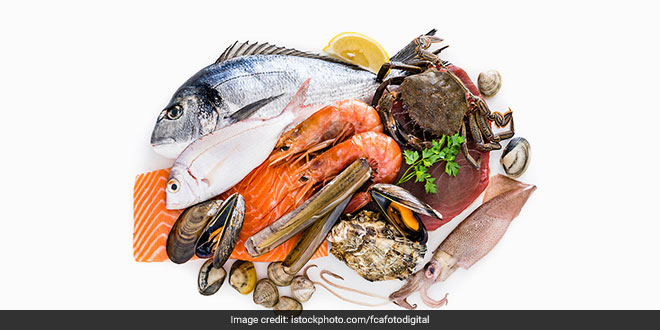Highlights
- Microplastic content was 0-10.5 microplastics per gram (MPs/g) in molluscs
- 0.1-8.6 MPs/g of plastic was found in crustaceans and 0-2.9 MPs/g in fish
- Microplastics have been found in various parts of organisms: Study author
London: A research has revealed that mussels, oysters and scallops possess the highest levels of contamination due to microplastic among all seafood. This research was conducted by researchers from the Hull York Medical School and the University of Hull. In order to investigate the levels of microplastic contamination globally in fish and shellfish, the researchers observed more than fifty studies between the years 2014 and 2020. Scientists are still trying to understand the health implications for humans consuming fish and shellfish contaminated with these tiny particles of waste plastic, which finds its ways into waterways and oceans through waste mismanagement.
Also Read: Plastic Menace: How Much Plastic Are You Eating?
Study author, Evangelos Danopoulos, a postgraduate student at Hull York Medical School said: “No-one yet fully understands the full impact of microplastics on the human body, but early evidence from other studies suggest they do cause harm.
A critical step in understanding the full impact on human consumption is in first fully establishing what levels of microplastics humans are ingesting. We can start to do this by looking at how much seafood and fish is eaten and measuring the amount of MPs in these creatures.
Also Read: Expert Blog: Exercise Plastic ‘Upvaas’ in the COVID World
The study shows microplastic content was 0-10.5 microplastics per gram (MPs/g) in molluscs, 0.1-8.6 MPs/g in crustaceans, 0-2.9 MPs/g in fish.
The latest consumption data in the research shows China, Australia, Canada, Japan and the US are amongst the largest consumers of molluscs, followed by Europe and the UK.
Molluscs collected off the coasts of Asia were the most heavily contaminated with researchers suggesting that these areas are more heavily polluted by plastic.
Evangelos Danopoulos added,
Microplastics have been found in various parts of organisms such as the intestines and the liver. Seafood species like oysters, mussels and scallops are consumed whole whereas in larger fish and mammals only parts are consumed. Therefore, understanding the microplastic contamination of specific body parts, and their consumption by humans, is key.
Also Read: Plastic Pollution: Green Turtles Eating Plastic As It Resembles Their Food, Finds A New Study
Plastic waste generated worldwide is expected to triple to 155-265 million metric tonnes per year by 2060. Once the plastic finds its way into oceans, lakes and rivers it has the potential to end up as microplastic inside shellfish, fish and marine mammals.
The research points to the need to standardise methods of measuring microplastic contamination so that different measurements can be more readily compared. Researchers said more data is needed from different parts of the world to understand how the issue varies between different oceans, seas and waterways.
Also Read: Plastic Pandemic: COVID-19 Trashed The Recycling Dream
(Except for the headline, this story has not been edited by NDTV staff and is published from a syndicated feed.)
NDTV – Dettol Banega Swasth India campaign is an extension of the five-year-old Banega Swachh India initiative helmed by Campaign Ambassador Amitabh Bachchan. It aims to spread awareness about critical health issues facing the country. In wake of the current COVID-19 pandemic, the need for WASH (Water, Sanitation and Hygiene) is reaffirmed as handwashing is one of the ways to prevent Coronavirus infection and other diseases. The campaign highlights the importance of nutrition and healthcare for women and children to prevent maternal and child mortality, fight malnutrition, stunting, wasting, anaemia and disease prevention through vaccines. Importance of programmes like Public Distribution System (PDS), Mid-day Meal Scheme, POSHAN Abhiyan and the role of Aganwadis and ASHA workers are also covered. Only a Swachh or clean India where toilets are used and open defecation free (ODF) status achieved as part of the Swachh Bharat Abhiyan launched by Prime Minister Narendra Modi in 2014, can eradicate diseases like diahorrea and become a Swasth or healthy India. The campaign will continue to cover issues like air pollution, waste management, plastic ban, manual scavenging and sanitation workers and menstrual hygiene.
[corona_data_new]



























